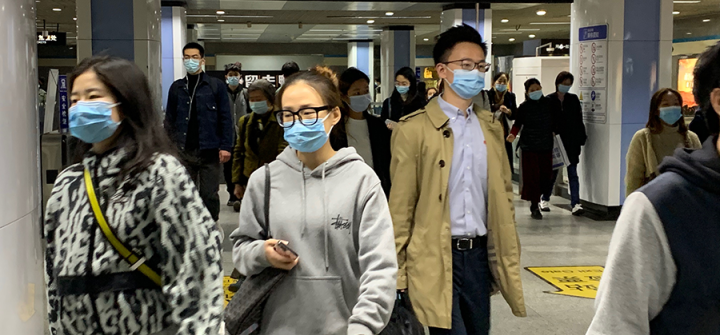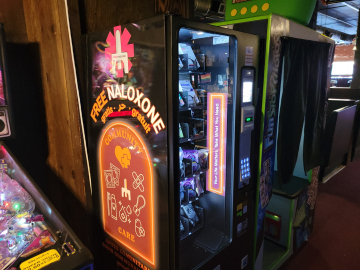'Vaccines Are Not Our Cure'
Unlike much of the world, life had already returned to a relative normal by the time COVID-19 vaccines arrived in China.
When Wei Wei, a product planning manager for flu vaccines at Sanofi Pasteur China, returned to Shanghai from the US in May 2020, he was immediately put into a 14-day quarantine.
“When I left the hotel, society was already looking back to normal. And that was before last summer,” he says.
Still, in his line of work—which involves market research for flu vaccines—the pandemic is still front of mind. The development, demand, and rollout of COVID vaccines is being closely watched as it may well influence the future of the vaccine industry, Wei says.
In the latest installment of GHN’s COVID Countries series, Wei discusses how the pandemic looks in China now, what COVID vaccines mean for the vaccine market, and WeChat’s pivotal role in monitoring the pandemic.
China:
- 102,294 cases
- 4,485 deaths
Source: Johns Hopkins
Big Picture
From a disease control perspective, China is doing pretty well.
In most public places—malls, public transportation—people are required to wear masks. But otherwise, people aren’t very much influenced by the pandemic anymore.
Schools are open again, and outbreaks are concentrated in small clusters—usually involving imported cases—that are addressed quickly.
For example, in late March a new set of cases surfaced in Ruili City, Yunnan Province, which is on the border with Myanmar. The city was quarantined, and medical supplies, medical teams, and contact tracers were sent in. Then, on April 1, vaccinations and nucleic testing began for the city’s 300,000 people. The aim was to vaccinate everybody in 5 days.
Mood of the People
In China, people are quite cooperative with orders or government policies. That part of the culture is deep rooted—people try to be cooperative and follow rules.
Vaccines are not our cure.
Before we had vaccines, people knew that by following rules, everyone would have a better situation. The ‘I want to go wherever I want’ attitude doesn’t happen that much here.
Stigma
At the beginning of the pandemic, I was still studying at Johns Hopkins and living in the US when President Trump was calling COVID-19 “the China virus.” Luckily, I didn’t experience any hostility myself—but my thinking was, ‘This will finally pass, either this pandemic or this presidency.’
I’m a positive person, and I believe that the global health community will win back its position, and people will be more respectful to those around them.
Media
WeChat—which is our equivalent of WhatsApp or Facebook—is the most popular source of information in China, and most people use it to check for updates from the government and other sources.
The government also has a central TV channel.
Everyone is assigned a code that can be found in WeChat or Alipay (a mobile payment platform), which the government uses to track their movements, where they're living and for how long they've stayed somewhere.
If you travel to a high-risk area, the government will be able to see where you come from, who you’ve been in contact with, etc.
It's pretty obvious if you come from an area where there's outbreak—and it will at least be advised to stay in the area, and I doubt you’ll be able to go far if you try to leave that place.
Vaccine Situation
Unlike many parts of the world, vaccines arrived in China when things were already mostly back to normal.
The government wants everyone to get vaccinated to build this immunity—but not everyone is rushing to get vaccinated. Many people feel the risk is relatively low.
There are now 5 different COVID vaccines being used in China—all of them from domestic brands.
Three of them are inactivated vaccines, one adenovirus vector vaccine and one recombinant vaccine. One company, Fosun group, is trying to import 100 million doses of Pfizer/BioNtech mRNA vaccine, but it hasn’t been licensed here yet.
The target is to reach 40% vaccination coverage by the end of June, according to Zhong Nanshan, who is leading the national COVID response working group, and nearly 3 million people are being vaccinated each day. The peak number is 6 million a day.
Over 200,000,000 doses have been administered. Over 80% of the healthcare professionals have already been vaccinated.
People are prioritized in 3 categories:
- Key populations, like those with occupational exposure risks, and risks of contact with imported cases.
- High-risk populations, such as people with chronic conditions and elderly people
- The lay public
For my line of work—which involves market research for flu vaccines—COVID vaccines could have a big impact.
At the beginning of flu season last year, people were trying very hard to get flu vaccines, and the willingness to get the flu vaccination has been increasing.
The diseases have very similar symptoms—and people don’t want to catch flu and then be treated as a potential COVID patient. And there overlaps in the way that vaccines for the diseases are administered and distributed.
The speed of COVID-19 vaccine development has accelerated almost all aspects of the vaccine industry, from vaccine development to approval to distribution and administration. For example, were it not for the pandemic, the mRNA vaccine platform would be taking much longer to advance.
What’s happening in your country? To be part of GHN’s COVID Countries series, email Brian at bsimpso1 [at] jhu.edu.
Join the 50,000+ subscribers in 170+ countries who rely on Global Health NOW summaries and exclusive articles for the latest public health news. Sign up for our free weekday enewsletter, and please share the link with friends and colleagues: www.globalhealthnow.org/subscribe
Passengers wear masks while commuting on the Shanghai metro, April 7 2021. Image: Wei Wei





